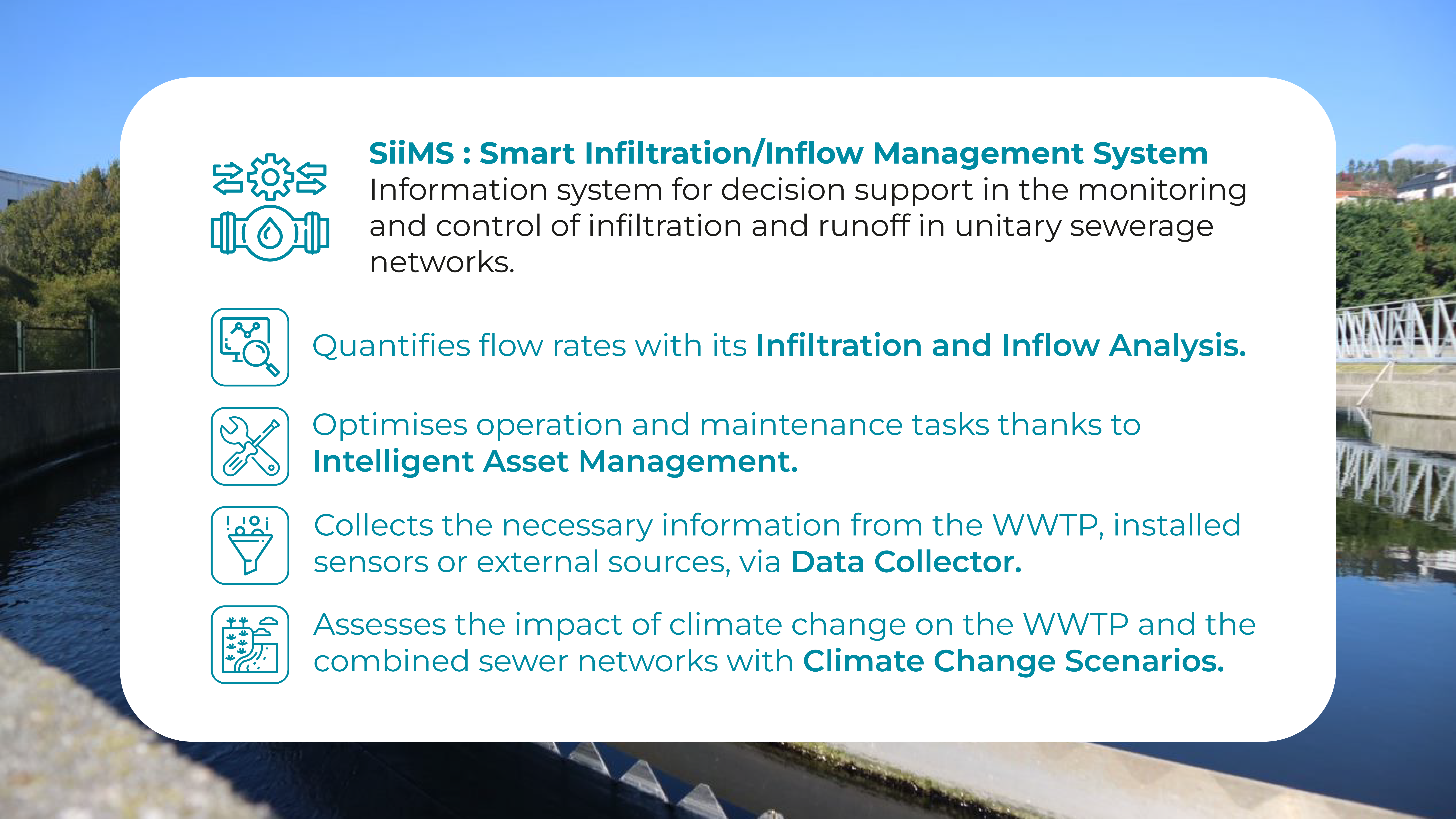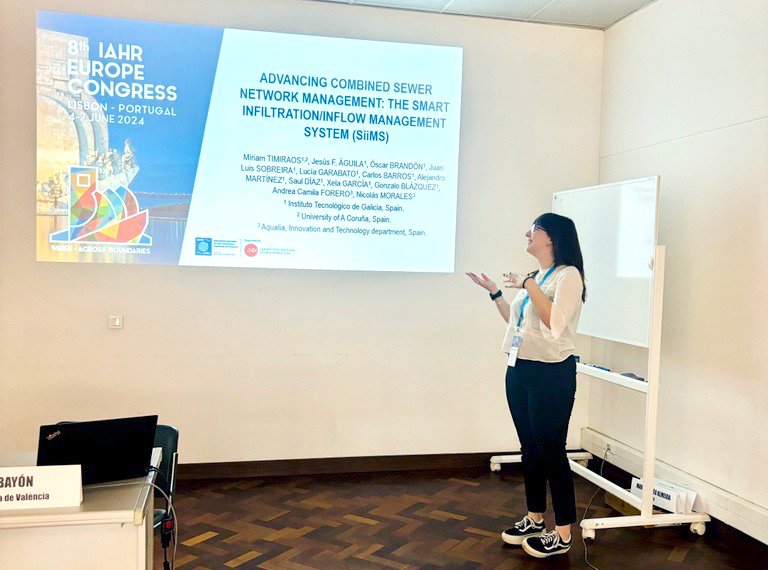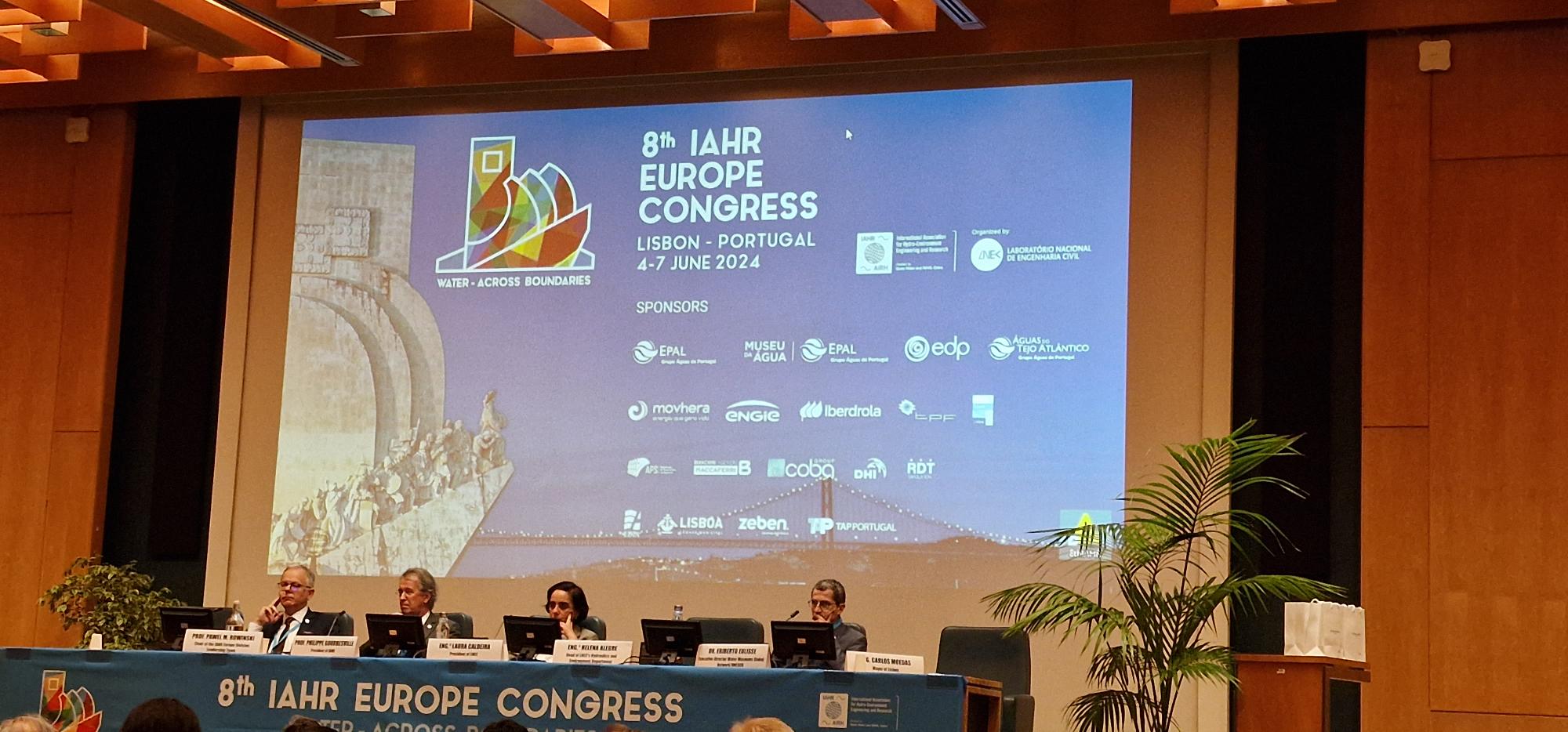
As we announced through this website and our networks, our colleagues from ITG, Míriam Timiraos and Juan Luis Sobreira were in Lisbon from 3rd to 6th of June presenting the main features of LIFE RESEAU and attending the 2nd Stakeholders workshop of Water4All Partnership in the framework of IAHR Europe 2024.
The following article summarizes the main achievements and conclusions discussed by our colleagues during these events.
Urban areas, particularly those with Combined Sewer Networks (CSNs), face significant challenges due to aging infrastructure and climate change. The LIFE RESEAU project aims to address these issues by developing a retrofitting solution to enhance the resilience of urban wastewater infrastructures in regions experiencing heavy precipitation. These are the key challenges, the methodology and main results obtained by LIFE RESEAU so far showcased by ITG in the oral presentation “ADVANCING COMBINED SEWER NETWORK MANAGEMENT: THE SMART INFILTRATION/INFLOW MANAGEMENT SYSTEM”
Key Challenges
In urban areas with CSNs, infrastructure deterioration leads to:
- Cracks and breakages.
- Increased Inflow and Infiltration (I/I)
- Overloaded networks that are not correctly sized for increased flows.
- Untreated water overflows.
Climate change exacerbates these problems by intensifying I/I, demanding innovative solutions to manage these impacts effectively.
Methodology
The primary goal of LIFE RESEAU is to develop a robust system to detect and quantify I/I. This involves:
- Data Collection:
- Utilizing existing systems like SCADAs, GIS, and third-party sources such as weather forecasts.
- Calculation Engine:
- Implementing models based on artificial intelligence (AI) and hybrid techniques using data from sensors and other sources.
- Visualization Interface:
- Analyzing I/I, managing assets smartly, and modelling climate change scenarios using hydraulic, hybrid, and AI models.
The system’s effectiveness is being demonstrated through real demo sites in Spain and Denmark, characterized by CSNs, heavy rainfall events, and limited hydraulic capacity of wastewater treatment plants (WWTPs).

SiiMS Capabilities
The SiiMS platform offers several key capabilities highlighted during the presentation:
- I/I Analysis:
Quantifying and locating I/I using sensors, weather data, machine learning algorithms, and hydraulic models.
- Optimization of Operations and Maintenance (O&M):
Identifying the most effective areas to repair, retrofit, or replace to reduce I/I.
- Climate Change Scenarios:
Evaluating the anticipated impacts on networks and WWTPs.
Implementation Results
The LIFE RESEAU project has achieved significant results, amongst which the following were introduced:
- Detection and Quantification of I/I:
Developing a code for analyzing flow rate variations over time using the Decomposition Flow Model. Its main benefit is to determine in which areas the ratio of Infiltration/Inflow is higher to prioritize interventions
- Saltwater Intrusion:
Identifying increased electrical conductivities in coastal areas to identify locations of the network affected by this issue which undermines the wastewater treatment
- Hydraulic Simulations:
Hydraulic models develop have shown that seasonal variability can double wastewater flows and increase overflows by an order of magnitude during the wettest months.
AI and Hybrid Models
The project also incorporates advanced predictive models for specific purposes, which overall aim to adjust operational settings considering forecasts of key parameters, including:
- Overflow Predictions:
Using Temporal Fusion Transformer (TFT) models
- WWTP Inlet Flow Predictions:
Anticipating inflows to treatment plants
- Water Quality Predictions:
Forecasting changes in water quality
- Hybrid Models:
Integration of lagged rainfall and flow time series, along with SWMM flow predictions, as model input parameters to enhance model results combining the benefits of both techniques
The project garnered interest from attendees at the conference session. Presenting the initial findings reinforced the importance of this research to prepare urban wastewater systems for future climatic impacts, ensuring greater resilience and sustainability.




